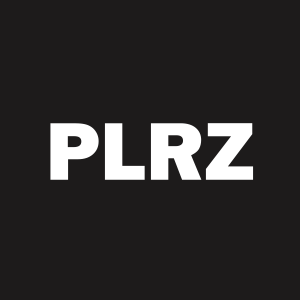Polyrizon Expands Drug Delivery Innovation with Preclinical Studies for Epilepsy Rescue Treatment
Rhea-AI Summary
Polyrizon (NASDAQ: PLRZ) has initiated preclinical studies for intranasal Benzodiazepines (BZDs) using its proprietary Trap and Target™ (T&T) platform for treating acute repetitive seizures and status epilepticus. The studies, conducted in collaboration with Professor Fabio Sonvico from the University of Parma, will evaluate drug loading capacity, release kinetics, nasal deposition, and stability.
The global acute repetitive seizures market, valued at $3.15 billion in 2024, is projected to grow at a 12.7% CAGR from 2025-2030. Additionally, the epilepsy treatment devices market is expected to reach $787.3 Million by 2033, growing at a 4.1% CAGR.
The initiative aims to develop a faster, safer, and more accessible solution for managing acute seizures outside clinical settings, targeting the approximately 50 million people worldwide affected by epilepsy according to WHO data.
Positive
- Large market opportunity: $3.15B acute repetitive seizures market with 12.7% CAGR
- Strategic collaboration with leading expert in intranasal drug delivery
- Platform targets unmet need in epilepsy treatment accessibility
Negative
- Early-stage development with no clinical data yet
- Product efficacy and safety yet to be demonstrated
- Significant time and resources required before potential commercialization
Insights
Polyrizon's entry into the epilepsy rescue treatment space represents a pipeline expansion with both opportunity and significant development challenges ahead. The company is targeting the
This announcement marks only the initial preclinical stage of development - they're studying basic parameters like drug loading capacity and release kinetics using a model molecule, not even the actual benzodiazepine compounds yet. The full development pathway would require animal studies, IND filing, and multiple clinical trials before potential commercialization.
Investors should recognize that several intranasal benzodiazepine products already exist in this space, including UCB's Nayzilam (midazolam) and Neurelis's Valtoco (diazepam), both FDA-approved for seizure rescue. For Polyrizon to capture market share, their proprietary Trap and Target™ platform would need to demonstrate superior drug delivery characteristics or patient benefits.
The collaboration with Professor Sonvico adds credibility to their technical approach, but the company's financial resources (
Polyrizon's exploration of intranasal benzodiazepine delivery represents an application of their Trap and Target™ platform to a well-established clinical need. The intranasal route offers significant advantages for seizure rescue: it bypasses first-pass metabolism, enables rapid brain delivery through the olfactory pathway, and allows for administration by non-medical personnel in emergency situations.
The preclinical study will assess critical technical parameters that determine commercial viability: drug loading capacity (how much active ingredient the gel can hold), release kinetics (how quickly the drug is delivered to the nasal mucosa), and stability (shelf-life in various conditions). These factors will determine whether their formulation can deliver therapeutic levels rapidly enough for seizure interruption.
The use of a model molecule at this stage is standard practice but means they're still years away from clinical testing. Intranasal benzodiazepine delivery presents specific challenges including nasal cavity volume, mucociliary clearance, and ensuring consistent absorption across patient populations.
The current market includes several FDA-approved intranasal seizure rescue options, so Polyrizon will need to demonstrate either improved efficacy, faster onset, greater reliability, or enhanced usability to differentiate their product. Their hydrogel approach could potentially offer advantages in terms of increased residence time in the nasal cavity or more precise dosing, but this remains to be proven in clinical studies.
Raanana, Israel, March 25, 2025 (GLOBE NEWSWIRE) -- Polyrizon Ltd. (Nasdaq: PLRZ) (the "Company" or "Polyrizon"), a development stage biotech company specializing in the development of innovative intranasal hydrogels, announced today the initiation of preclinical studies for intranasal Benzodiazepines (BZDs), a first-line treatment for acute repetitive seizures (ARS) and status epilepticus, using its proprietary drug delivery platform.
According to the World Health Organization (WHO), epilepsy is a neurological condition affecting about 50 million people worldwide. Many existing therapies fail to provide adequate control of acute repetitive seizures and may come with undesirable adverse effects. The global acute repetitive seizures market size was estimated at USD 3.15 billion in 2024 and is projected to grow at a CAGR of
According to the latest research study, the global epilepsy treatment devices market was valued at approximately USD 526.8 Million in 2023 and is expected to reach a value of around USD 787.3 Million by 2033, growing at a compound annual growth rate (CAGR) of about
The study will be conducted in collaboration with Professor Fabio Sonvico, Associate Professor at the Department of Food and Drug of the University of Parma (Italy) a leading expert in the development of intranasal and pulmonary drug delivery solutions and a member of the Company’s Scientific Advisory Board.
These preclinical studies mark a step forward in evaluating Polyrizon’s Trap and Target™ (T&T) platform for the intranasal administration of Benzodiazepine, designed to enable rapid, targeted, and patient-friendly seizure rescue therapy. The studies will assess key parameters, such as drug loading capacity, release kinetics, nasal deposition and stability using a model molecule, that simulates the behavior of intranasal benzodiazepines at this early stage,laying the groundwork for further safety and efficacy testing in preclinical and clinical studies.
BZDs are well-established, first-line drugs for the acute treatment of seizures. They act by enhancing the inhibitory effects of gamma-aminobutyric acid (GABA) at the GABA-A receptor in the central nervous system, helping to quickly suppress seizure activity.
Intranasal delivery of BZDs offers multiple advantages over traditional routes of administration, including ease of use and increased accessibility. This approach allows emergency responders, caregivers and at-risk individuals to administer life-saving medication rapidly and independently in out-of-hospital settings.
“Launching this preclinical program marks an important milestone in our initiative to improve emergency treatment options for epilepsy patients,” said Tomer Izraeli, CEO of Polyrizon. “We believe our intranasal delivery platform has the potential to offer a faster, safer and more accessible solution for managing acute seizures outside of clinical settings.”
About Polyrizon
Polyrizon is a development stage biotech company specializing in the development of innovative medical device hydrogels delivered in the form of nasal sprays, which form a thin hydrogel-based shield containment barrier in the nasal cavity that can provide a barrier against viruses and allergens from contacting the nasal epithelial tissue. Polyrizon’s proprietary Capture and Contain TM, or C&C, hydrogel technology, comprised of a mixture of naturally occurring building blocks, is delivered in the form of nasal sprays, and potentially functions as a “biological mask” with a thin shield containment barrier in the nasal cavity. Polyrizon are further developing certain aspects of our C&C hydrogel technology such as the bioadhesion and prolonged retention at the nasal deposition site for intranasal delivery of drugs. Polyrizon refers to its additional technology, which is in an earlier stage of pre-clinical development, that is focused on nasal delivery of active pharmaceutical ingredients, or APIs, as Trap and Target ™, or T&T. For more information, please visit https://polyrizon-biotech.com.
Forward Looking Statements
This press release contains “forward-looking statements” within the meaning of the Private Securities Litigation Reform Act of 1995 and other securities laws. Words such as “expects,” “anticipates,” “intends,” “plans,” “believes,” “seeks,” “estimates” and similar expressions or variations of such words are intended to identify forward-looking statements. For example, the Company is using forward-looking statements when it discusses its initiative to improve emergency treatment options for epilepsy patients, its belief that its intranasal delivery platform has the potential to offer a faster, safer and more accessible solution for managing acute seizures outside of clinical settings and the expected growth of the global acute repetitive seizures and epilepsy treatment devices markets. Forward-looking statements are not historical facts, and are based upon management’s current expectations, beliefs and projections, many of which, by their nature, are inherently uncertain. Such expectations, beliefs and projections are expressed in good faith. However, there can be no assurance that management’s expectations, beliefs and projections will be achieved, and actual results may differ materially from what is expressed in or indicated by the forward-looking statements. Forward-looking statements are subject to risks and uncertainties that could cause actual performance or results to differ materially from those expressed in the forward-looking statements. For a more detailed description of the risks and uncertainties affecting the Company, reference is made to the Company’s reports filed from time to time with the Securities and Exchange Commission (“SEC”), including, but not limited to, the risks detailed in the Company’s annual report filed with the SEC on March 11, 2025 and subsequent filings with the SEC. Forward-looking statements speak only as of the date the statements are made. The Company assumes no obligation to update forward-looking statements to reflect actual results, subsequent events or circumstances, changes in assumptions or changes in other factors affecting forward-looking information except to the extent required by applicable securities laws. If the Company does update one or more forward-looking statements, no inference should be drawn that the Company will make additional updates with respect thereto or with respect to other forward-looking statements. References and links to websites have been provided as a convenience, and the information contained on such websites is not incorporated by reference into this press release. Polyrizon is not responsible for the contents of third-party websites.
Contacts:
Michal Efraty
Investor Relations








